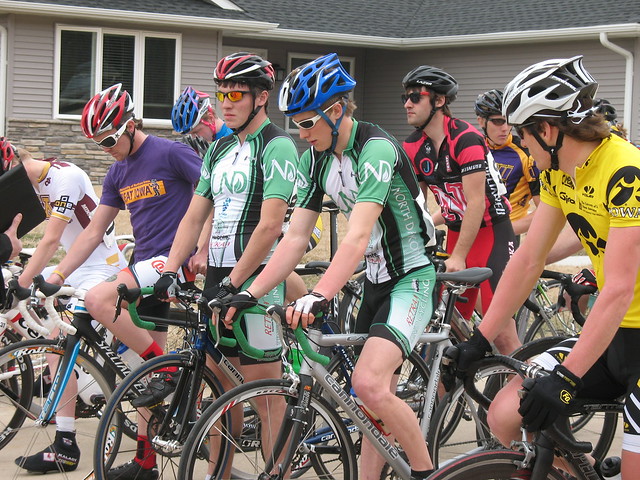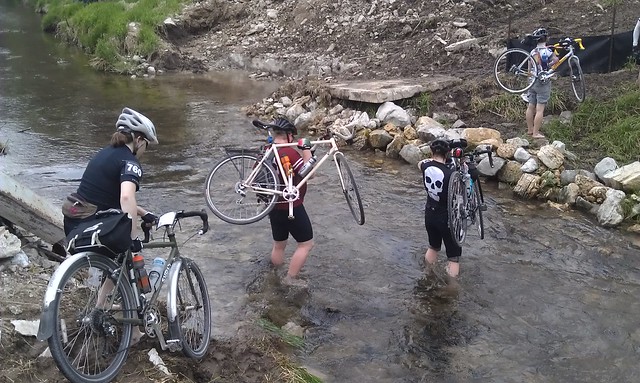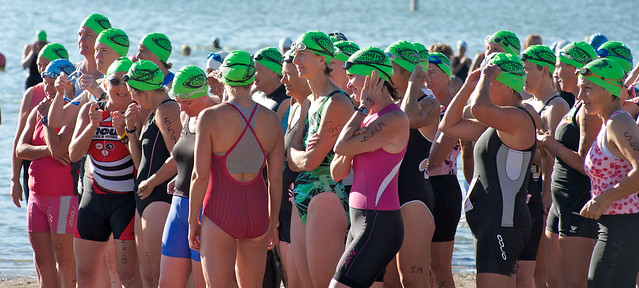[This post refers to functionality that has since been removed.]
 All these guys slept on the floor so they could be here.
All these guys slept on the floor so they could be here.The Cost of Racing
After almost three years and thousands of event details entered into the Northern Plains Athletics database, I feel like I have an idea of what the regional racing scene looks like. During this time I’ve also been racing: mostly locally, but sometimes I travel for the sole purpose of racing myself or supporting my wife. I’ve noticed a few loose trends.
- Racing is expensive.
- More races are free.
Obviously these trends contradict each other. Racing is expensive across the board, but it is less so where people have been making a point to hold free races. I’m not going to comment too much on the idea of free races, except that I think more of them can be held and they will be awesome, as long as sponsors or private donations compensate the race director. Obviously Chris Skogen makes enough money somewhere to have been able to support the Almanzo the past few years, but not everyone who could be a great race director has those resources.
But why is racing only “less so” expensive when the race is free? Travel and lodging costs. Traveling to races adds up, and if there isn’t a good local scene where you are, you probably don’t even have a good crew to carpool with you every weekend. I give the Minnesota Cycling Federation a fair amount of crap for only organizing races in southern Minnesota, but that’s honestly the most cost-effective for the majority of their members. So let’s amend our previous list:
- Racing is expensive [even if]
- More races are free.
 If you don’t pay, you can’t complain.
If you don’t pay, you can’t complain.Announcing Homestays
There are ways to reduce costs, however. We could start lobbying our local race directors to reduce prices. We could only go to races close to home. We could each host one free race a year to “grow the sport of [your sport here].” We could take the time to build our local club up to the point where travel costs are negligible because of carpooling and shared lodging. All of these options are very location-based: what works in Grand Forks might not in Rapid City, and Duluth has its own problems altogether. So what can a regional event calendar hope to do to help everyone?
There’s a new feature for finding cheap or free lodging here on Northern Plains Athletics: Homestays. It’s a simple idea, stolen from my few seasons as a collegiate cyclist. You find a race, you find people living there who are willing to let you crash with them because you’re a [cyclist | runner | skier | triathlete], and you pay them back with a six pack and a promise to pay it forward. Detailed instructions are here. It’s easy to host. It’s easy to not host. If you view an event page, local homestays are listed–or will be, if we can achieve a critical mass. It’s free–Northern Plains Athletics isn’t involved in any transactions between host and traveling athlete–although we do provide a place for your airbnb or Couchsurfing URLs.
With costs going up, it makes no sense to not take advantage of the incredible network of people you race against, sometimes week in and week out. I envision a way to make these bonds stronger, to make the distance from here to there seem a little bit less, and to build up a real social network. You can use this website, or not. You can take the idea and use it to get more people to your club’s event, or not. Think of it as a grand experiment. Tell me what works, tell me what doesn’t, and we’ll go from there.
How well do you know the person next to you?







